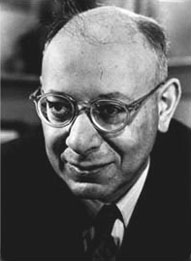Vladimir Propp: (1895-1970), was a soviet formalist scholar who analyzed the basic
elements of Russian folktales to identify their narrative elements. His most
important book is Morphology of the
Folktales. For him, in all fairy tales there are an initial situation, after
which the tale usually takes the following 31 functions, it is known asThe functions of Vladimir Propp. According to this theory, a tale can contain all
the functions or only some of them, but in all cases, the functions appears in
the same order. As an example of these functions, here are two of them:
- ABSENTATION: A member of a family
leaves the security of the home environment. This may be the hero or some
other member of the family that the hero will later need to rescue. This
division of the cohesive family injects initial tension into the
storyline. The hero may also be introduced here, often being shown as an
ordinary person.
- INTERDICTION: An interdiction is addressed to the hero ('don't
go there', 'don't do this'). The hero is warned against some action (given
an 'interdiction').
He also concludes that all the characters can be resolved into 8 broad character types in the 100 tales he analyzed. We are going to mention two of them:
- The villain — struggles against the hero.
- The dispatcher — character who makes the lack known and sends the
hero
Bruno Bettelheim: (1903-1990), was one of the
great child psychologists of the twentieth century and perhaps none of his
books has been more influential than The
uses of Enchantment, because of its revelatory study of fairy tales and
their universal importance in understanding childhood development . He was a good story teller, who made this analysis in terms of Freudian psychology.
In it, he studied the role of the most important fairy tales on the development
of the unconscious. He thought that they play different roles in teaching
children about morals, right versus wrong etc. and they are instruments to
stimulate their imagination. Bettelheim argues convincingly that fairy tales provide a unique way for
children to come to terms with the dilemma of their lives.
María Tatar: Is an American academic whose expertise lies in
children´s literature, German literature and Folklore. Since 1970´s, she has
focused on fairy tales and she discovered that in Grimm´s stories are included
murder, mutilation, cannibalism, infanticide and incest. For her, the fairy
tales have a magical glittery sparkle that fires a reader´s imagination, but
also a dark horrific side that stages our deepest anxieties and fears. The Annotated
Classic Fairy Tales is a remarkable
treasure trove, a work that celebrates the best-loved tales of childhood and
presents them through her vision, as she is a leading authority in the field of
folklore and children's literature. She presents new interpretations of the powerful
stories in this worldwide best-selling book.
Kieran Egan: (Ireland in 1942), is an educational philosopher who think that education
may be more imaginative. For him, nightingales talk telling children certain
kind of .feelings, since fear to a world of happy fantasy in which disease and
cruelty are absent.
He divided the fairy tales in:
·
Happy fantasy
·
Fear fantasy
Fantasy is for him a product of language mind and
fantasy stories disturbing features are a healthy preparation for a life, that
is unlikely to lack disturbance. Fantasy stories undermine courage, they
present to the child's mind a world in which undefined but fearsome threats are
behind the facade of the everyday world. Our discouraging anxieties may start
with monsters under the bed but the anxieties remain with us, less precisely
focused, to interfere with our work and our relationships and to suck pleasure
from our lives. Fantasy is a prerequisite both for a range of intellectual
skills and for an imaginative and flexible engagement with reality.

No hay comentarios:
Publicar un comentario